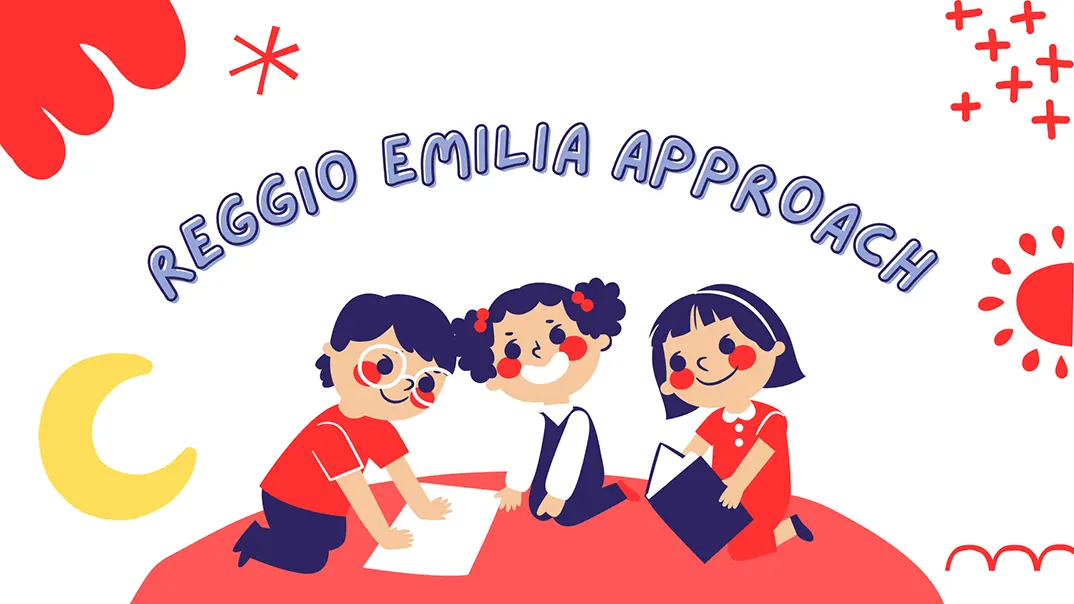Как подход Реджио-Эмилии может по-настоящему формировать то, как дети растут и учатся? Что делает эту образовательную философию такой уникальной в содействии целостному развитию ребенка? И как педагоги могут эффективно внедрять эти идеи в своих классах?
Подход Реджо-Эмилии к образованию подчеркивает силу исследования, творчества и социальных взаимодействий в процессе обучения ребенка. Основанный на вере в то, что дети компетентны, способны и полны потенциала, этот подход поощряет активное участие, самовыражение и глубокую связь между детьми, учителями и окружающей средой.
Хотите узнать, как эта философия работает на практике? Давайте рассмотрим, как подход Реджо-Эмилии интегрируется в развитие ребенка.
Что такое подход Реджо-Эмилии?
Подход Реджо-Эмилия, названный в честь города Реджо-Эмилия в Италии, был разработан педагогом Лорисом Малагуцци после Второй мировой войны. Эта образовательная философия основана на вере в то, что дети являются сильными, компетентными и активными участниками своего обучения.
В основе подхода Реджо-Эмилии лежит идея, что к детям следует относиться как к соученикам, а не как к пассивным получателям информации. Подход способствует созданию среды, в которой дети могут исследовать, задавать вопросы и открывать новые возможности посредством практического опыта и интерактивного обучения.
В этой модели учителя не просто инструкторы, а соавторы, которые работают вместе с детьми, помогая им направлять их обучение. Она также поощряет подход, основанный на сообществе, где семьи и более широкое сообщество считаются неотъемлемой частью процесса обучения.
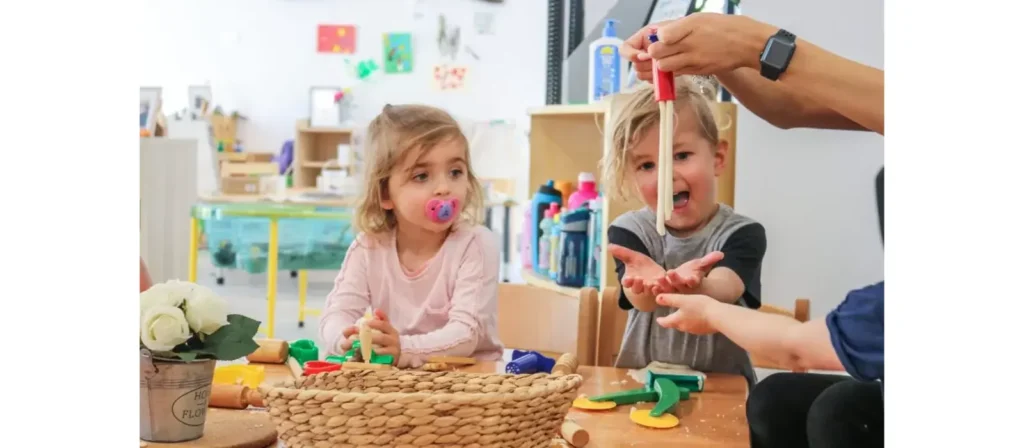
История Реджо-Эмилии
Подход Реджо-Эмилия зародился в 1940-х годах в городе Реджо-Эмилия, Италия, после Второй мировой войны. После войны группа местных педагогов и родителей во главе с Лорис Малагуцци, направленные на восстановление сообщества посредством новой формы образования. Они открыли первый детский сад «Asilo Nido», уделяя особое внимание уважению детей как активных учеников и поощрению их естественного любопытства.
Лорис Малагуцци считал, что дети выражают себя в «100 языков,” meaning they use various media such as art, play, music, and words to communicate their ideas. This concept became central to the Reggio Emilia philosophy, which emphasized creativity, exploration, and collaboration. The environment also played a crucial role, seen as a “third teacher” that nurtures and supports children’s learning.
К 1960-м годам Подход Реджо-Эмилия получила признание в Италии, а в последующие десятилетия распространилась на международном уровне. Педагоги со всего мира посещали Реджо-Эмилию, чтобы перенять ее инновационные методы, и сегодня она считается одной из ведущих моделей раннего образования детей во всем мире.
Основная философия подхода Реджо-Эмилии
Подход Реджо-Эмилии основан на нескольких ключевых принципах, определяющих его применение в дошкольном образовании:
Образ Ребёнка
Дети рассматриваются как сильные, способные и полные потенциала. Они рассматриваются как активные участники своего обучения, постоянно осмысливающие окружающий мир посредством исследования и исследования. Этот взгляд является центральным в методе Реджо-Эмилии и формирует то, как педагоги взаимодействуют с детьми, полагая, что у каждого ребенка есть глубокое желание учиться и открывать.
Окружающая среда как третий учитель
В дошкольных учреждениях Реджо-Эмилии среда обучения имеет решающее значение для развития ребенка. Классы спроектированы так, чтобы быть эстетически приятными, организованными и заполненными материалами, которые стимулируют любопытство. Естественное освещение, открытые пространства и доступные ресурсы позволяют детям свободно и творчески исследовать, что является важным аспектом подхода Реджо-Эмилии.
Документация обучения
Учителя в школах Реджо-Эмилии активно документируют процессы обучения детей. Эта документация может включать фотографии, видео, письменные наблюдения и художественные работы. Эти записи помогают учителям оценивать индивидуальное развитие и предоставляют детям осязаемую запись их учебного пути, подтверждая, что обучение — это видимый, непрерывный процесс. Этот подход является отличительной чертой философии Реджо-Эмилии, где документация отражает и делает обучение видимым для всех заинтересованных сторон.
Сотрудничество и сообщество
Обучение рассматривается как социальная деятельность с использованием метода Реджо-Эмилии. Дети работают вместе над проектами, а учителя сотрудничают с семьями, другими педагогами и более широким сообществом. Идея заключается в том, что обучение улучшается, когда дети являются частью поддерживающей, совместной сети, и этот совместный дух является основным принципом школ Реджо-Эмилии.
Долгосрочные проекты
Вместо того, чтобы фокусироваться на краткосрочных уроках, подход Реджо-Эмилии делает акцент на долгосрочных проектах, которые позволяют детям глубоко погружаться в темы, представляющие интерес. Эти проекты могут длиться недели или месяцы и развиваться на основе любопытства и открытий детей, демонстрируя, как философия Реджо-Эмилии способствует устойчивому, ориентированному на детей опыту обучения.
Преимущества подхода Реджио к развитию ребенка
Благодаря фокусировке на обучении, ориентированном на ребенка, и интеграции семьи и общества, подход Реджо-Эмилии обеспечивает богатую среду для целостного развития ребенка. Вот как он поддерживает различные этапы развития:
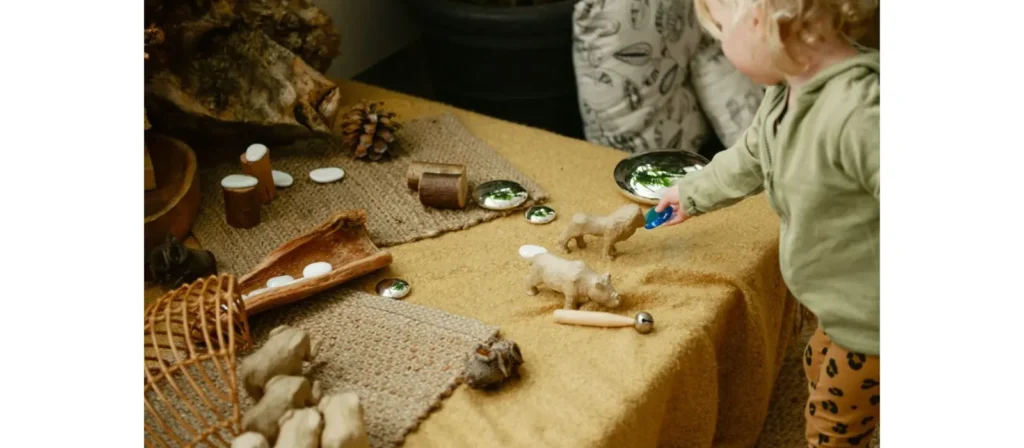
Когнитивные навыки
Позволяя детям исследовать и расследовать в своем собственном темпе, подход Реджо-Эмилии способствует развитию независимости и критического мышления. Дети учатся подходить к проблемам, задавать вопросы и находить ответы самостоятельно.
Навыки общения
Детей поощряют выражать себя разными способами — через устную речь, рисунки или физическое движение. Это помогает им развивать как вербальные, так и невербальные навыки общения, которые необходимы для будущего успеха.
Социальные и эмоциональные навыки
Подход Реджо-Эмилии высоко ценит эмпатию и уважение к другим. Благодаря совместной работе и общему опыту дети развивают сильные социальные навыки и эмоциональный интеллект, включая понимание и регулирование эмоций.
Творчество и воображение
Одним из наиболее примечательных аспектов подхода Реджо-Эмилии является акцент на креативности. Детям предоставляется свобода экспериментировать и исследовать, что приводит к росту воображения и инновационного мышления. Эта креативность распространяется на все области развития, включая решение проблем и самовыражение.
Классная обстановка в Реджо-Эмилии
The среда в классе занимает центральное место в подходе Реджо-Эмилии, и его часто называют «третьим учителем». В этой философии физическое пространство, где учатся дети, является не просто фоном для их образования, но и неотъемлемой частью их пути развития. Тщательно спроектированный класс поощряет исследование, социальное взаимодействие, творчество и независимое мышление. Создавая эстетически приятную, функциональную и наполненную интересными материалами среду, педагоги Реджо-Эмилии создают пространства, которые вдохновляют детей исследовать, воображать и взаимодействовать с миром осмысленным образом.
Роль пространства в классах Реджо-Эмилии
В Реджо-Эмилии классная среда рассматривается как «третий учитель», подчеркивая важность пространства в процессе обучения ребенка. Организация классной комнаты имеет решающее значение для развития чувства любопытства и исследования. Физическая среда спроектирована так, чтобы быть открытой, гибкой и привлекательной, с зонами как для индивидуальной, так и для совместной деятельности. Классные комнаты часто просторные и светлые, что способствует созданию позитивной атмосферы, которая поощряет естественное любопытство детей.
The space is organized to encourage movement and interaction, with мебель для яслей and materials placed strategically to foster engagement. For instance, spaces might be dedicated to group work, quiet areas for reflection, and zones for creative expression through art or building. This flexibility allows children to choose where to engage, enhancing their sense of autonomy and decision-making skills.


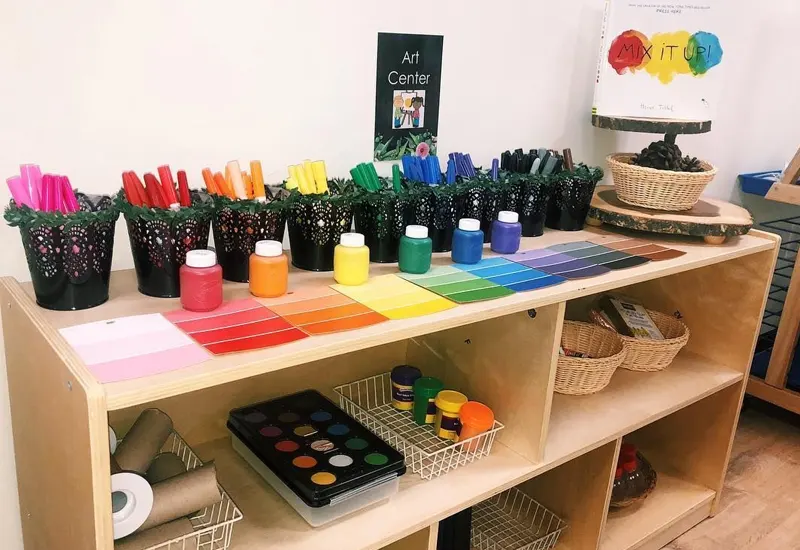
Эстетичный и функциональный дизайн классной комнаты
В классах Реджо-Эмилии эстетическое качество среды тщательно продумано. Дизайн функционален и визуально привлекателен, в пространство включены натуральные материалы и элементы. Дерево, естественный свет, растения и предметы ручной работы создают теплую, гостеприимную атмосферу, которая побуждает детей взаимодействовать с окружающей средой.
Классы часто украшаются детскими работами, создавая чувство собственности и гордости за пространство. Планировка и дизайн отражают интересы и проекты детей, которые меняются и развиваются. Эта адаптивность делает среду класса динамичной, а физическое пространство реагирует на постоянное развитие идей и процессов обучения детей.
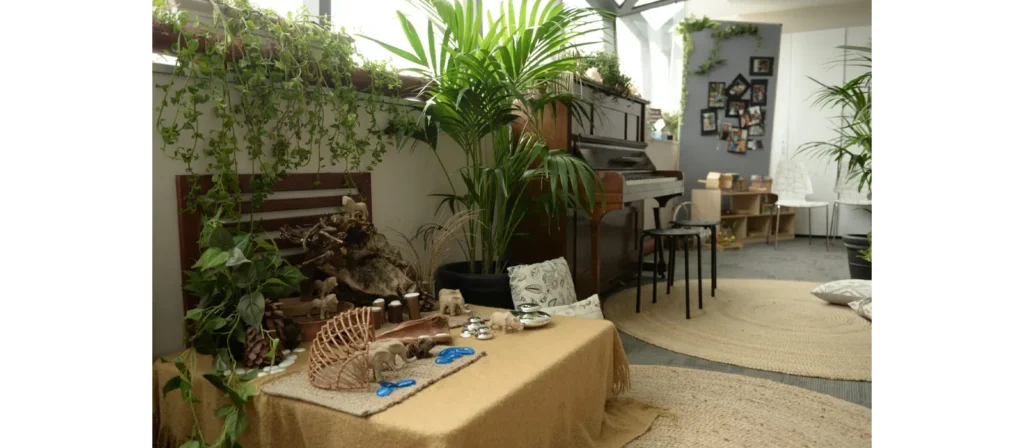
Материалы и ресурсы в классе Реджо-Эмилии
The материалы в классе Реджо-Эмилии are carefully selected to stimulate creativity and exploration. Rather than relying on pre-packaged toys or materials, the classroom is filled with open-ended resources that children can use in various ways. Natural materials include stones, sticks, clay, fabric, water, art supplies, construction materials, and recyclable objects.
Эти материалы часто хранятся в прозрачных контейнерах или корзинах на уровне глаз детей, что позволяет им выбирать, что они хотят использовать, и способствует развитию чувства независимости. Наличие такого разнообразия материалов побуждает детей заниматься творческой игрой, решением проблем и творческим самовыражением. По мере развития детских проектов могут вводиться новые материалы для углубления исследования их идей и концепций.
Предоставляя детям свободу выбора и взаимодействия с широким спектром материалов, подход Реджо-Эмилии способствует экспериментальному обучению, где дети активно выстраивают свое понимание окружающего мира. Материалы становятся инструментами для открытия, способствуя развитию когнитивных, социальных и эмоциональных навыков практическим, осмысленным образом.



Напишите нам, если у вас есть вопросы или запросите расценки. Наши специалисты ответят вам в течение 48 часов и помогут выбрать нужный вам продукт.
Учебная программа по подходу к Реджо-Эмилии
Учебная программа Reggio Emilia Approach не является фиксированным набором предметов или видов деятельности. Вместо этого это гибкая, развивающаяся структура, которая отвечает интересам, вопросам и открытиям детей. Учебная программа динамична и разработана для поощрения любопытства, исследования и выяснения. Вот более подробный взгляд на то, как структурирована учебная программа и как она способствует развитию ребенка:
Эмерджент Учебная Программа
В подходе Реджо-Эмилии учебная программа формируется на основе интересов и вопросов детей. Учителя наблюдают за взаимодействием детей, разговорами и игрой и используют эти наблюдения для планирования мероприятий, которые расширяют идеи и интересы детей. Это делает процесс обучения персонализированным и соответствующим каждому ребенку.
Например, если группа детей проявляет интерес к насекомым, учитель может разработать учебный проект по этой теме, включив в него занятия по искусству, науке и языку. Учебная программа развивается по мере того, как дети глубже погружаются в предмет, делая обучение более осмысленным и увлекательным.
Проектное обучение
A hallmark of the Reggio Emilia curriculum is project-based learning. Long-term projects are a core component where children work on a theme or topic over an extended period, sometimes weeks or even months. These projects are driven by the children’s questions and investigations, allowing them to explore topics in-depth.
В ходе проекта дети участвуют в различных видах обучения, таких как наблюдение, экспериментирование, рисование, обсуждение и представление своих результатов другим. Этот тип обучения способствует развитию критического мышления, навыков решения проблем и сотрудничества.
100 языков детей
Центральная концепция учебной программы Реджо-Эмилии — «100 языков детей». Эта идея отражает веру в то, что дети выражают себя разными способами — через слова, искусство, движение, музыку или другие формы выражения. Учебная программа поощряет детей исследовать и передавать идеи с помощью различных медиа и материалов.
This means children are given diverse tools and resources, such as clay, paint, building materials, and digital media, to express their creativity. This flexibility allows each child to find an expression mode, fostering individual identity and collective learning.
Интегрированное обучение по всем дисциплинам
Вместо того, чтобы разделять предметы на отдельные категории, такие как математика, естественные науки и искусство, подход Реджо-Эмилии поощряет междисциплинарное обучение. Темы изучаются целостно, с различными аспектами учебной программы, взаимосвязанными. Например, проект о животных может включать научные наблюдения, художественные представления и повествование.
Такой комплексный подход помогает детям увидеть связи между различными областями знаний и способствует более полному пониманию окружающего мира.
Уважение к индивидуальным путям обучения
Учебная программа Reggio Emilia ориентирована на ребенка и признает, что каждый ребенок учится уникально и в своем собственном темпе. Учителя уважают индивидуальные стили обучения, предоставляя разнообразные возможности и ресурсы для удовлетворения различных потребностей. Некоторые дети предпочитают практические занятия, в то время как другие предпочитают вербальное общение или визуальное исследование.
Ориентируясь на интересы и потребности каждого ребенка, подход Реджо-Эмилии помогает детям стать активными участниками своего обучения, развивая чувство сопричастности и самостоятельности в своем образовательном пути.
Ключевые советы для успешного внедрения метода Реджио
Внедрение метода Реджо-Эмилии требует времени, приверженности и гибкого мышления. Вот несколько советов для успеха:
- Начните с малого: Начните с включения ключевых элементов подхода, таких как использование открытых материалов или содействие проектам, возглавляемым детьми. Постепенно развивайте эти элементы по мере того, как вы будете чувствовать себя более комфортно с философией.
- Создайте гибкое пространство: Arrange your classroom in a way that supports exploration, creativity, and collaboration. Allow children to move freely between areas and engage with the materials in their own way.
- Будьте наблюдательны и терпеливы: Подход Реджио основан на наблюдении, поэтому уделите время тому, чтобы по-настоящему понять потребности, интересы и вопросы вашего ученика. Позвольте обучению разворачиваться органично.
- Создавайте атмосферу сотрудничества: Поощряйте командную работу и обсуждения среди детей. Они будут учиться друг у друга и у своего учителя, создавая богатый опыт обучения.
- Привлекайте семьи: Поддерживайте вовлеченность семей и регулярно делитесь с ними процессом обучения. Их поддержка будет бесценной.
Reggio Emilia Approach Compared to Other Educational Approaches
Что касается дошкольного образования, различные подходы фокусируются на развитии и обучении ребенка. Подход Реджо-Эмилии выделяется своей уникальной философией, но как он соотносится с другими известными образовательными моделями, такими как Монтессори, Вальдорф и традиционное образование? Давайте рассмотрим основные различия и сходства.
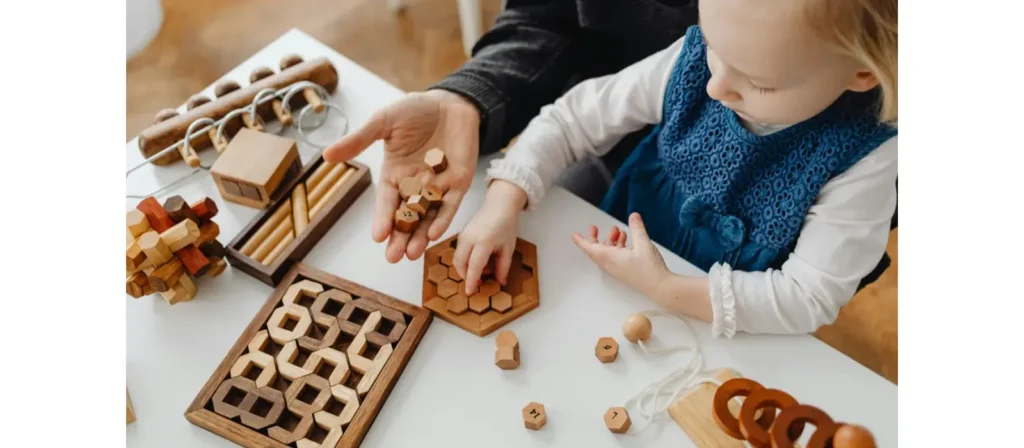
Реджо-Эмилия против подхода Монтессори
Оба Реджо-Эмилия против Монтессори приближается основное внимание уделяется обучению, ориентированному на ребенка, но они различаются по нескольким важным параметрам:
Роль учителя:
- Монтессори: В подходе Монтессори учителя выступают в роли проводников или посредников, которые наблюдают за детьми и предлагают инструменты или материалы при необходимости. Акцент делается на самостоятельном обучении, когда ребенок работает с материалами, предназначенными для самокоррекции и индивидуального открытия.
- Реджо-Эмилия: Напротив, учителя в подходе Реджо-Эмилии рассматриваются как соученики и сотрудники с детьми. Они взаимодействуют с детьми более активно, участвуя в обучении, задавая вопросы и поощряя более глубокое исследование.
Структура учебной программы:
- Монтессори: Учебная программа Монтессори более структурирована с конкретными материалами и занятиями, разработанными для обучения определенным концепциям. Она следует четкой прогрессии навыков, таких как практические жизненные навыки, сенсорная деятельность, развитие языка и математика.
- Реджо-Эмилия: Учебная программа Реджо-Эмилии является гибкой и развивающейся, то есть она развивается на основе интересов и запросов детей. Она основана на проектах и фокусируется на долгосрочном изучении тем, которыми увлечены дети, и которые могут меняться со временем.
Среда:
- Монтессори: Классы Монтессори хорошо организованы, с отдельными зонами, посвященными различным типам обучения (например, практической жизни, языку, математике). Материалы размещаются на низких полках, доступны для детей и разработаны с учетом самокоррекции.
- Реджо-Эмилия: Хотя классы в Реджо-Эмилии также тщательно спроектированы, акцент делается на создании эстетически приятной среды, которая стимулирует творчество. Классы часто называют «третьим учителем», потому что их установка поощряет исследование и сотрудничество.
Реджо-Эмилия против подхода Вальдорфа
Подход Вальдорфа, разработанный Рудольфом Штайнером, является еще одной известной образовательной моделью с уникальными особенностями. Вот как он сравнивается с подходом Реджо-Эмилии:
Сосредоточьтесь на воображении и игре:
- Вальдорф: Вальдорфское образование делает сильный акцент на развитии воображения через рассказывание историй, искусство и драму. Оно объединяет творческую игру и художественные занятия в течение дня, чтобы поддержать эмоциональный и духовный рост ребенка.
- Реджо-Эмилия: Similarly, the Reggio Emilia Approach encourages creativity and imagination, but it focuses more on exploration and problem-solving through a collaborative, hands-on approach. The arts are important, but often integrated into larger projects rather than being the central focus.
Роль учителя:
- Вальдорф: Вальдорфские учителя играют центральную роль в жизни ребенка. Ожидается, что они будут работать с одной и той же группой детей в течение нескольких лет, создавая прочные, долгосрочные связи. Учителя направляют развитие моральных и духовных ценностей через рассказывание историй, музыку и искусство.
- Реджо-Эмилия: В Реджо-Эмилии учителя также являются важными проводниками, но их роль скорее как соучеников вместе с детьми. Учителя способствуют обучению, наблюдая и отвечая на идеи и вопросы детей, а не сосредотачиваясь на передаче ценностей или конкретных знаний.
Учебная программа и темп обучения:
- Вальдорф: Вальдорфская программа обучения тесно связана с естественным развитием ребенка. Она интегрирует академическое обучение с более поздним этапом развития ребенка, делая акцент на творческой и художественной игре в ранние годы.
- Реджо-Эмилия: Reggio Emilia не следует фиксированной программе обучения, а адаптируется на основе интересов и вопросов детей. Проекты развиваются по мере того, как дети изучают тему, и акцент делается на социальном взаимодействии и обучении в сообществе.
Реджо-Эмилия против традиционного образования
Традиционные системы образования, часто встречающиеся в основных государственных и частных школах, обычно следуют более жесткой программе с четкими академическими целями и фокусом на стандартизированном тестировании. Вот как подход Реджо-Эмилии отличается от этой более традиционной модели:
Взаимоотношения учителя и ребенка:
- Традиционное образование: В традиционных классах учитель является центральной властью и основным источником знаний. Часто акцент делается на прямом обучении, при этом ожидается, что дети будут пассивно усваивать информацию.
- Реджо-Эмилия: The relationship between teacher and child is much more collaborative. Teachers act as facilitators and co-learners, guiding children’s exploration while fostering independent thought and problem-solving.
Структура учебной программы:
- Традиционное образование: Учебная программа в традиционных школах обычно основана на предметах (например, математика, естественные науки, языковые искусства). Она часто предопределена и фокусируется на достижении определенных образовательных вех к определенному возрасту.
- Реджо-Эмилия: Учебная программа в подходе Реджо-Эмилии основана на проектах и органично вытекает из интересов и запросов детей. Она гибкая и адаптивная, поощряя детей глубоко вникать в предмет и направляя их к развитию собственных вопросов и идей.
Методы обучения:
- Традиционное образование: В традиционном образовании обучение, как правило, более пассивно и сосредоточено на индивидуальных достижениях. Дети могут сидеть за партами большую часть дня, слушая лекции или выполняя задания.
- Реджо-Эмилия: Подход Реджо-Эмилии делает акцент на активном практическом обучении. Дети участвуют в групповой работе, обсуждениях и творческих мероприятиях, часто используя различные медиа для изучения концепций. Акцент делается на сотрудничестве, решении проблем и критическом мышлении.
Напишите нам, если у вас есть вопросы или запросите расценки. Наши специалисты ответят вам в течение 48 часов и помогут выбрать нужный вам продукт.
Проблемы и критика подхода Реджо-Эмилии
Хотя подход Реджо-Эмилии прославился во всем мире благодаря своему ориентированному на ребенка, основанному на исследовании обучению, он сталкивается с некоторыми проблемами и критикой. Вот некоторые основные опасения:
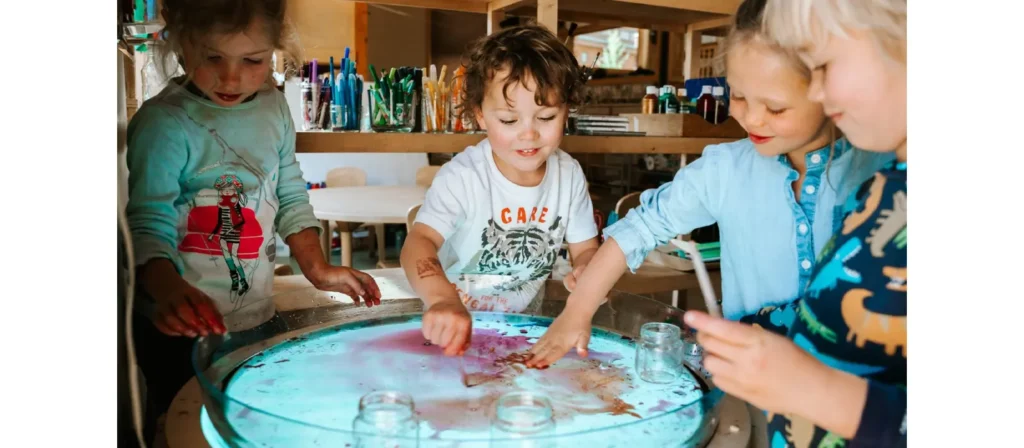
Ресурсоемкий
Подход Реджо-Эмилии требует значительных ресурсов, таких как время, материалы и пространство. Классы должны быть тщательно спроектированы, чтобы способствовать творчеству и исследованию, что может быть дорогостоящим. Кроме того, подход в значительной степени опирается на документацию, которая требует от учителей значительного времени и усилий для записи и осмысления работы детей.
Подготовка и повышение квалификации учителей
Роль учителя в Реджо-Эмилии сложна, поскольку она требует продвинутых навыков наблюдения, гибкости и глубоких знаний о развитии ребенка. Высококачественная подготовка учителей имеет решающее значение, но найти полностью подготовленных педагогов в философии Реджо-Эмилии может быть непросто. Это может привести к непоследовательности в том, как реализуется подход.
Трудность стандартизации
Поскольку подход Реджо-Эмилия является в высшей степени индивидуальным и эмерджентным, его трудно стандартизировать и измерять результаты. В отличие от более традиционных моделей, где оценки основаны на стандартизированных тестах, Реджо-Эмилия фокусируется на качественной документации развития детей. Это можно рассматривать как недостаток в регионах или школах, где приоритет отдается подотчетности и измеримым результатам.
Ограничения по времени и гибкости
Из-за строгих руководящих принципов учебной программы, требований к тестированию и ограниченного времени подход Реджо-Эмилии может быть трудно реализовать в некоторых образовательных условиях. Открытая, проектная модель обучения не всегда может соответствовать более структурированным или ограниченным по времени образовательным системам, что затрудняет полное принятие философии.
Культурная адаптивность
Подход Реджо-Эмилии был разработан в Италии, и его философия глубоко укоренена в культурном и социальном контексте этого региона. Хотя он был успешно реализован во многих странах, могут возникнуть проблемы при адаптации подхода к различным культурным или образовательным контекстам. Различия в общественных ценностях, образовательных ожиданиях и доступных ресурсах могут влиять на то, насколько хорошо модель Реджо-Эмилии работает в различных средах.
Потенциал выгорания учителей
Учитывая уровень вовлеченности и рефлексии, требуемый учителями в подходе Реджо-Эмилии, существует риск выгорания, особенно в условиях ограниченных ресурсов или недостаточной поддержки учителей. Акцент на постоянном профессиональном развитии, документации и индивидуальном обучении может подавить педагогов без надлежащей поддержки.
Заключение
Подход Реджо-Эмилии — это мощная образовательная философия, которая способствует развитию ребенка во всех его аспектах: когнитивном, эмоциональном, социальном и творческом. Сосредоточившись на сильных сторонах и потенциале каждого ребенка, он создает среду, в которой дети развиваются как независимые мыслители, решатели проблем и соратники.

